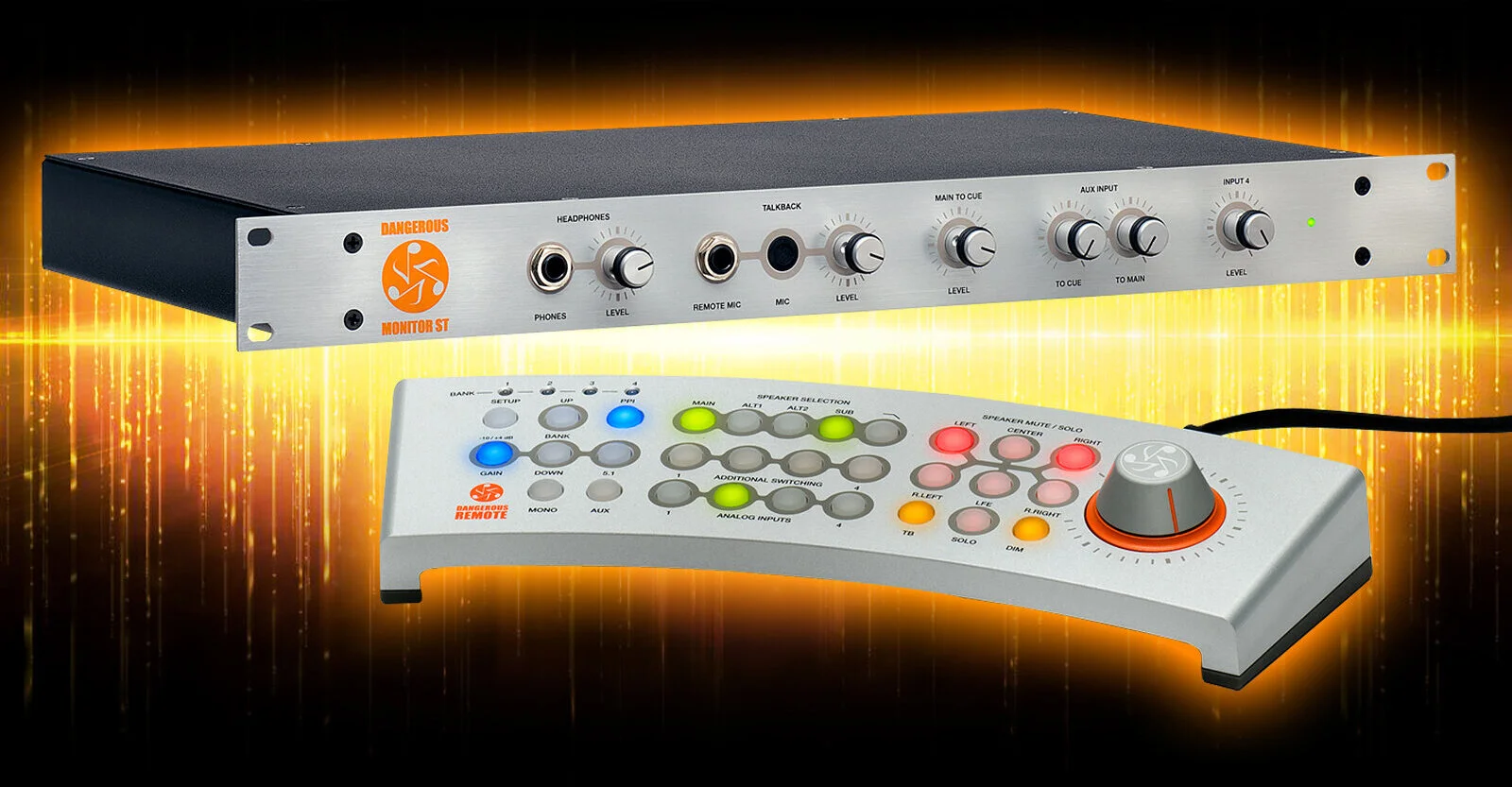MIX REVIEW: FIELD TEST: DANGEROUS MUSIC MASTER
Dangerous Music changed the very concept of mixing “in the box” by introducing the Dangerous 2-Bus, the first stand-alone, line-level summing mixer. Dangerous designer Chris Muth, prior to partnering with company co-founder Bob Muller, was known for designing custom mastering consoles for Sterling Sound and other mastering facilities. He has now put his experience toward Dangerous Music’s first dedicated mastering tool, the Dangerous Master, a device offering functions that were only available to mastering facilities that could afford a custom console.
YES, MASTER
The Dangerous Master has a two-rackspace chassis, with two power transformers located inside an external power supply. The extruded aluminum faceplate is anodized purple, with heavy-duty, LED-lit push-button switches and aluminum knobs.
The knobs turn multideck rotary switches made by Janco, an aerospace supplier. The Dangerous Master’s circuit boards are a combination of thru-hole and surface-mount construction, and make use of modern THAT Corp. and Burr-Brown ICs instead of discrete transistors. The back is covered in XLRs and does not require custom multipin cabling.
The unit provides source selection, gain staging, stereo width adjustment and hard bypass of three processors, as well as a clever way to compare processed audio to unprocessed audio with level compensation. There are two stereo inputs with a switch on the front for switching between them, providing an easy way to compare two different versions of a mix; you can also compare two different D/A converters. The input switcher feeds a dual-mono level control for correcting a tilted stereo image and for adding or removing gain before processing. There are three stereo inserts in a fixed order, each switchable on the front panel, allowing for adding or removing external processing. It would have been useful to have more insert points available to allow for more processors without having to use a patchbay.
DISCIPLINED APPROACH
The unit’s S&M feature is a mid-side matrix with width control that is implemented well. The S&M Width knob widens or narrows the stereo image in a more transparent and useful way than any other device I’ve used.
In mastering, mid-side widening devices tend to do more harm than good, but I could see this one being useful once in a while. When S&M is engaged, the second insert is matrixed for mid-side processing, allowing for EQ or compression of the center of the image separately from the sides of the image. Material common to both the left and right channels — such as vocals, kick, snare and bass — can be processed separately from the material that is panned out to the sides. This can be useful for saving a mix where the vocal was printed too low or for taming bright cymbals without darkening the vocal. Finally, after the inserts is a stereo output gain control. Each gain control is tuned in half-decibel steps. I’d like to see a greater range of gain both up and down, but the rotary switches have only so many steps.
IN THE MIX
I first tested the Dangerous Master for linearity and found it to be ruler-flat, according to the meters. Each position of every knob was accurate to hundredths of a decibel at all frequencies, allowing the unit to track a stereo image perfectly as gain levels are changed. However, listening tests revealed a barely perceptible sonic footprint that went from input to output, although the unit is much more transparent than most mastering processors. This coloration remained consistent as the various functions were switched in and out.
I first plugged in the unit by connecting it between a Pacific Microsonics AD/DA converter and my custom console’s monitor section, effectively bypassing the rest of the board. I connected an Ampex tape machine to the alternate input, and was able to compare digital and analog versions of the same mix quickly, both through the same processing path. My Requisite limiter and Sontec EQ were connected to insert points 1 and 3, with an SPL equalizer patched into the second insert. By using the S&M feature, I was able to add more focus to some hard-panned guitars in a mix without upsetting the relationship between the vocal and bass guitar.
I also used the output knob to hit the A/D converter at precisely the right level. The pair of stereo outputs made it easy to print our processing to a pair of A/D converters running at 44.1 and 48 kHz, which would save a lot of time when mastering a DVD project that includes an audio CD. I also set up the Dangerous Master in an atypical way: installing it as part of my console’s processing chain and using it as an ancillary gain stage with good results.
THE RIGHT STUFF
Dangerous Music really got it right with the Dangerous Master. By focusing on the processing path, the Dangerous Master doesn’t tie you down to a specific monitor controller. The unit is built without compromise, and its design quality is evident. Its sonic quality is in a league with custom-built proprietary mastering consoles, and its ingenious ergonomics make purchasing the Dangerous Master a no-brainer.
Combined with a good monitor preamp or monitor controller, the Dangerous Master would make an excellent console for a mastering engineer who uses a only a few pieces of analog outboard gear or who doesn’t mind re-patching using a patchbay or having unused gear in the signal path. Price: $6,299.



